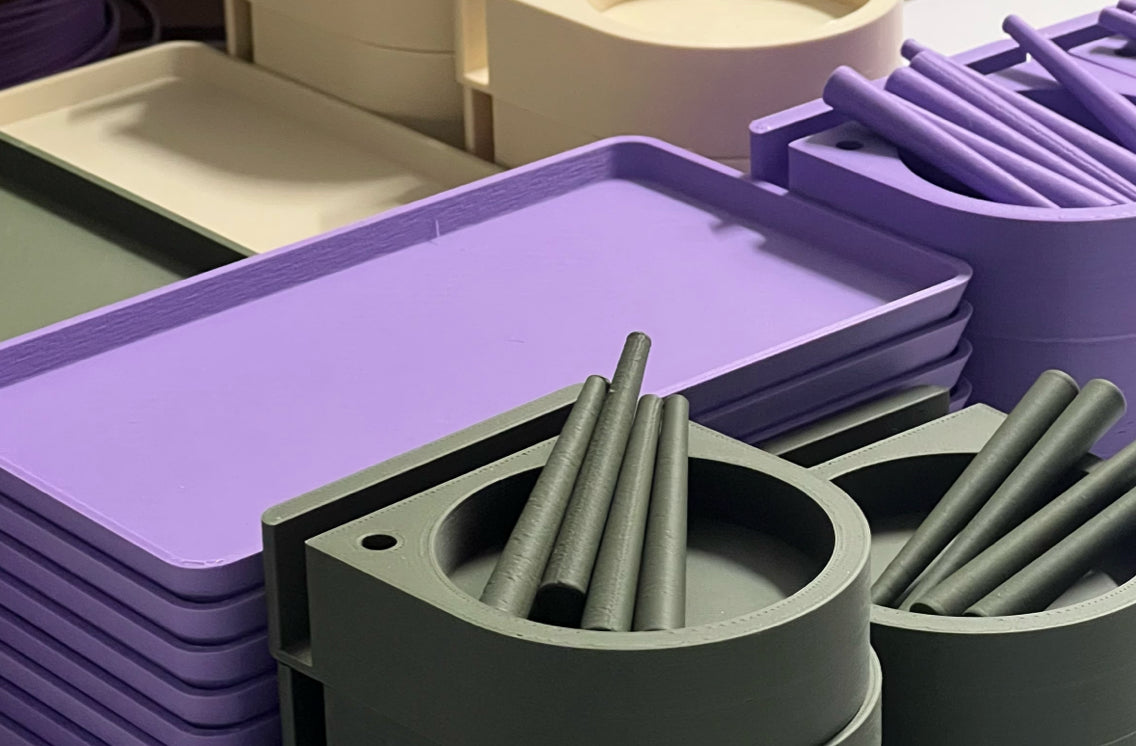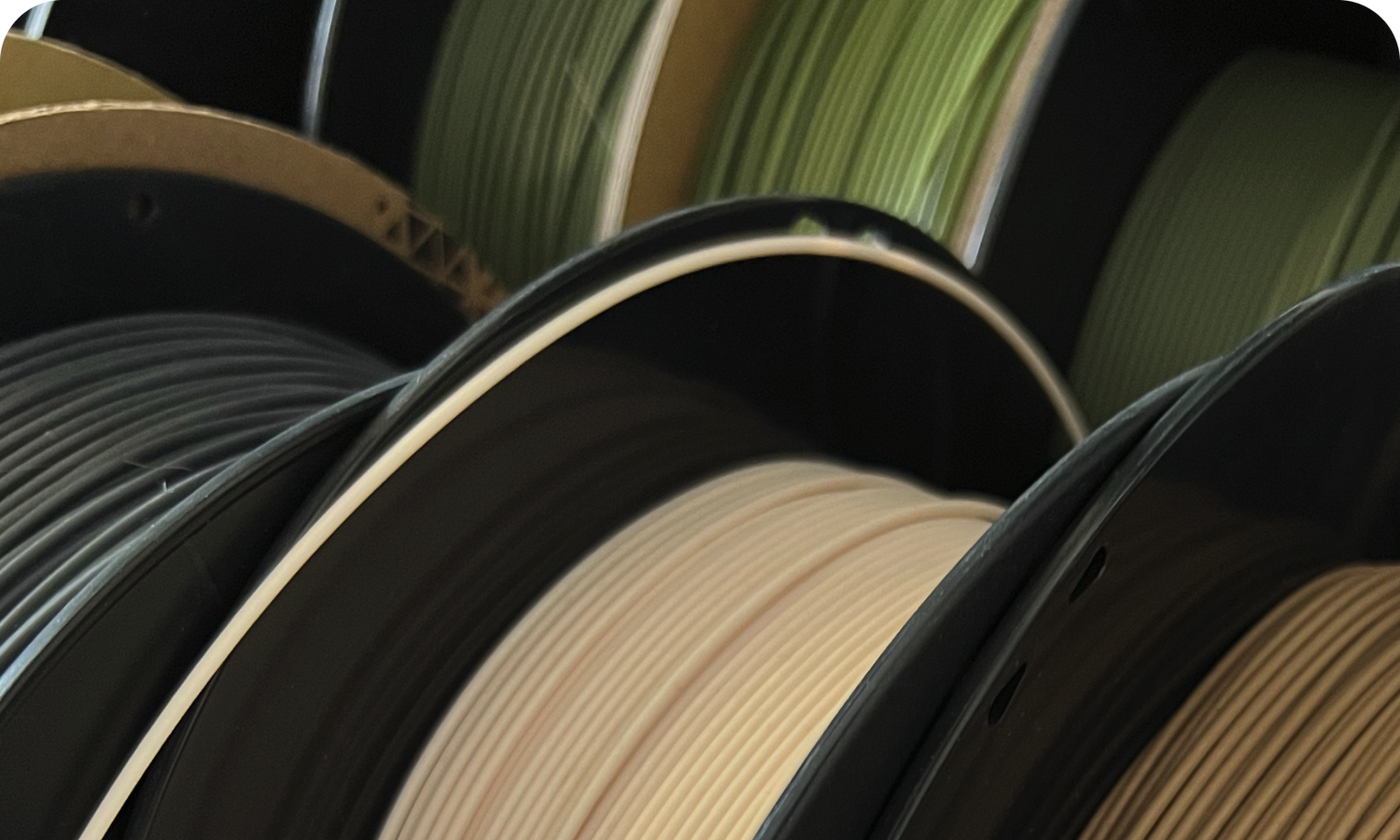Being able to prototype and iterate
We’re working with a medium that allows us to easily iterate on the tiny details of a product – from what your eye will see, to the surfaces your hand will touch, and even aspects you’ll never notice. It means we likely go through 40+ rounds of tweaks before we’re ready to say it’s ready.

Photo Caption: Products from the prototype shop hanging out together.
- When we’re doing this in my home studio, it allows us to bring a sketch or thought into reality, and test with our audience to learn what works and what doesn’t. Our first real test of this was the prototype shop.
- When we’re doing this with our 3D print farm in The USA, we’re spending that time on refining features of the product that help the production process go smoother each time – from reducing our rejection rate, to improving on the scalability of the design.
- AND the prototyping can happen remotely, between my home studio in Toronto and the 3D print farm in Idaho. They make a design update, send us the file, and I'm able to 3D print it at home to gather more detailed feedback for them.
Low-waste production
This is a BIG ONE for us. We recognize that we make consumer goods, and that inherently is going to mean more things exist in the world. So if we exist in this system, we want to create only what is needed, as much as we possibly can. We’re also a self-funded business, so 3D printing makes it more accessible to manufacture products at home and at scale.
If we want, we can print 20 units of something. And when we do larger print runs, it doesn’t have to be more than 1,000 units if we don’t want it to be. It’s not to say we can’t do bigger print runs, but we don’t need to. That means less stock on shelves, and not being buried in an inventory nightmare, where we are scrambling to sell more than we want or need to be selling.
Printing with plant-based plastic
We’re betting on a material called PLA. It’s a plant–based plastic, and is the only material used in our 3D printed products. Known as a bioplastic, it derives from renewable resources like corn, sugarcane, or other plant-based materials! Unlike many traditional plastics that are made from fossil fuels, these bioplastics use organic matter as their source – helping to reduce our dependence on non-renewable resources, lower carbon emissions, and create better alternatives to traditional plastics.

Photo Caption: Filament spools hanging out together
Made in Canada & The USA
Being as close to the manufacturing process is such a privilege, and we’re constantly excited that this is our reality. We knew how much we benefitted from my home studio setup of two 3D printers, so finding a 3D print farm who could do this at scale, and was within a few hours, was everything we were looking for! We weren’t sure that it would be the case, but now we have a constant line of communication and collaboration with our 3D print farm in Idaho. Needless to say, we’re fucking stoked. And every product we make is either from Canada in my home studio, or from Idaho at the 3D print farm.
De-bossing a 3D printed product
Who doesn’t like the possibility of more fun? We can customize a product by de-bossing a logo mark or graphic right into the .STL (a type of 3D object file). Once that file is sliced and prepped for 3D printing, de-bossing the logo-mark or graphic just becomes part of the printing process and adds a bit of extra time. Of course adding something new to a product always means there are new details to consider, but the important part is we have the capability!

Dive into our world of 3d printing
Curious about plant–based plastic? Keen to know why we’re 3D printing instead of injection moulding? Unsure what a grip fin is? Have no idea what any of that means?
2min
The many layers of why we love 3D printing
There are so many reasons we love it. Learn more here...
2min
What grip fins are and how it led to the Jointl...
It has nothing to do with sharks! Learn more here...